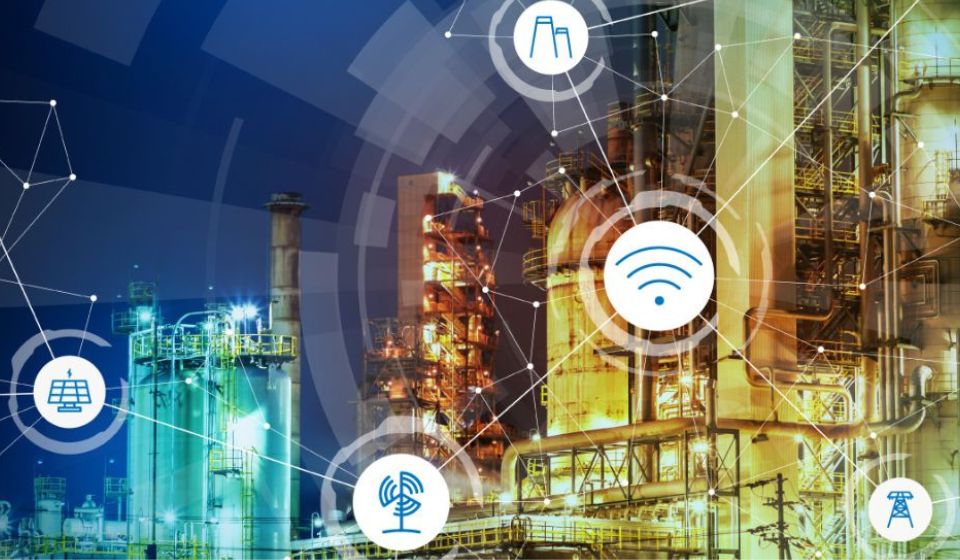In the rapidly evolving landscape of supply chain management, the integration of Industrial Internet of Things (IIoT) and connected technologies is revolutionising distribution networks.
These advanced solutions enable real-time visibility, optimise logistics, and enhance operational efficiency.
This blog explores how IIoT and connected technology can transform your distribution management, offering significant benefits to your business.

Enhancing real-time visibility
One of the most transformative impacts of IIoT in distribution is the enhancement of real-time visibility across the entire supply chain.
End-to-end tracking
IIoT devices, such as GPS trackers and RFID tags, provide end-to-end tracking of goods as they move through the distribution network. This real-time tracking allows businesses to monitor the location, status, and condition of their shipments at any given moment.
For example, a company can use IIoT-enabled sensors to track the temperature of perishable goods in transit, ensuring they remain within the required range. This level of visibility helps prevent spoilage and ensures product quality upon arrival.
Inventory management
Connected technology also revolutionises inventory management by providing real-time data on stock levels across various locations. Smart shelves and automated inventory systems use sensors to monitor stock in real time, reducing the chances of overstocking or stockouts.
With accurate inventory data, businesses can make informed decisions about restocking and order fulfilment, ultimately improving customer satisfaction and reducing carrying costs.
Optimising logistics and transportation
IIoT and connected technology play a crucial role in optimising logistics and transportation within the distribution network.
Route optimisation
IIoT-enabled vehicles and fleet management systems provide real-time data on traffic conditions, weather, and other variables that impact delivery routes. Using this data, logistics managers can optimise routes to reduce travel time, fuel consumption, and delivery costs.
For instance, if a traffic jam is detected on a primary route, the system can automatically suggest alternative routes to avoid delays. This dynamic routing capability ensures timely deliveries and enhances overall efficiency.
Fleet management
Connected technology allows for comprehensive fleet management, including vehicle maintenance and driver performance monitoring. IIoT devices can track vehicle health indicators such as engine performance, tire pressure, and fuel levels, enabling proactive maintenance.
By addressing maintenance issues before they lead to breakdowns, businesses can reduce downtime and extend the lifespan of their fleet. Additionally, monitoring driver behaviour can improve safety and efficiency by promoting best practices and reducing the risk of accidents.

Improving warehouse operations
Warehousing is a critical component of the distribution network, and IIoT brings significant improvements to warehouse operations.
Automation and robotics
IIoT facilitates the integration of automation and robotics in warehouses. Automated guided vehicles (AGVs) and robotic arms can perform repetitive tasks such as picking, packing, and sorting, reducing the reliance on manual labour.
These automated systems are equipped with sensors and connected to a central management system, ensuring seamless coordination and real-time adjustments based on current demands. This automation increases throughput, accuracy, and efficiency in warehouse operations.
Environmental monitoring
Connected sensors can monitor environmental conditions within warehouses, such as temperature, humidity, and lighting. Maintaining optimal conditions is crucial for preserving the quality of stored goods, particularly perishables and sensitive items.
For example, if the temperature in a refrigerated warehouse rises above the set threshold, the system can trigger an alert and automatically adjust the cooling system. This proactive approach ensures product integrity and reduces the risk of spoilage.
Enhancing security and risk management
IIoT and connected technology enhance security and risk management across the distribution network.
Asset protection
Real-time tracking and monitoring of assets help prevent theft and loss. IIoT devices can provide alerts if goods deviate from their planned route or if unauthorised access is detected.
For instance, geofencing technology can create virtual boundaries around specific areas. If a shipment crosses these boundaries without authorisation, the system can alert security personnel to investigate and take action.
Predictive maintenance
IIoT enables predictive maintenance for warehouse equipment and transportation vehicles. By analysing data from connected devices, businesses can predict when equipment is likely to fail and schedule maintenance proactively.
This predictive approach reduces the risk of unexpected breakdowns and ensures that equipment operates at peak efficiency, minimising disruptions in the distribution network.
Facilitating data-driven decision making
Data collected from IIoT devices provides valuable insights that drive informed decision-making and continuous improvement.
Analytics and reporting
Advanced analytics tools process data from connected devices to generate actionable insights. Businesses can use these insights to identify inefficiencies, optimise processes, and improve overall performance.
For example, data analysis might reveal patterns in delivery delays or bottlenecks in warehouse operations. By addressing these issues, companies can enhance their distribution network’s efficiency and reliability.
Demand forecasting
IIoT data also supports more accurate demand forecasting. By analysing real-time sales data, inventory levels, and market trends, businesses can predict future demand with greater precision.
Accurate demand forecasting helps businesses plan their distribution activities more effectively, ensuring that the right products are available at the right time and place to meet customer needs.
Conclusion
The integration of IIoT and connected technology is transforming distribution networks by enhancing real-time visibility, optimising logistics, improving warehouse operations, and facilitating data-driven decision-making. These technologies provide businesses with the tools they need to operate more efficiently, reduce costs, and improve customer satisfaction.
As the supply chain landscape continues to evolve, adopting IIoT and connected technology will be essential for staying competitive. By leveraging these advanced solutions, businesses can build smarter, more resilient distribution networks that are better equipped to meet the demands of the modern market. The future of distribution lies in the intelligent, connected systems that IIoT makes possible, promising a new era of efficiency, reliability, and innovation in supply chain management.



